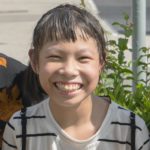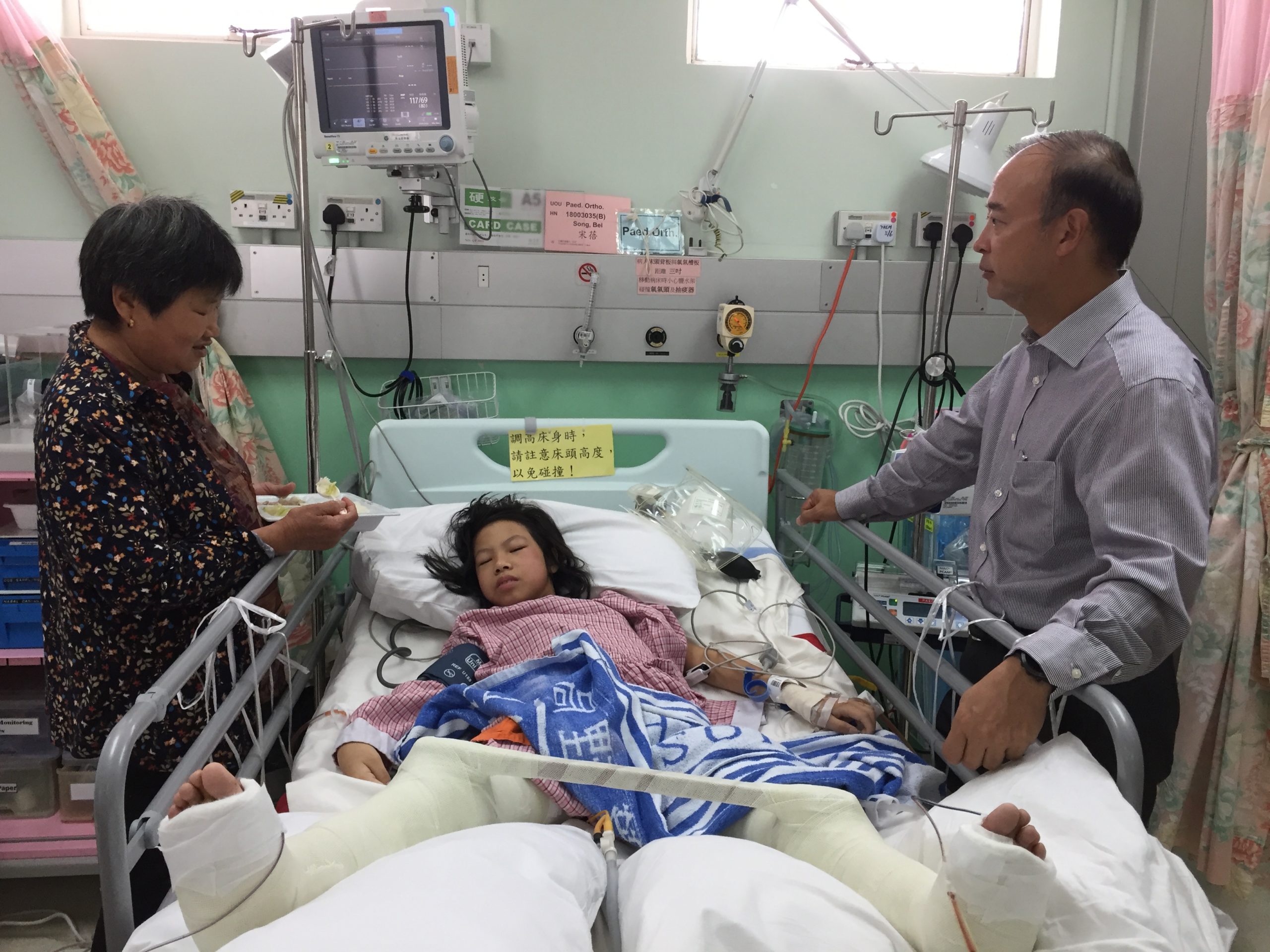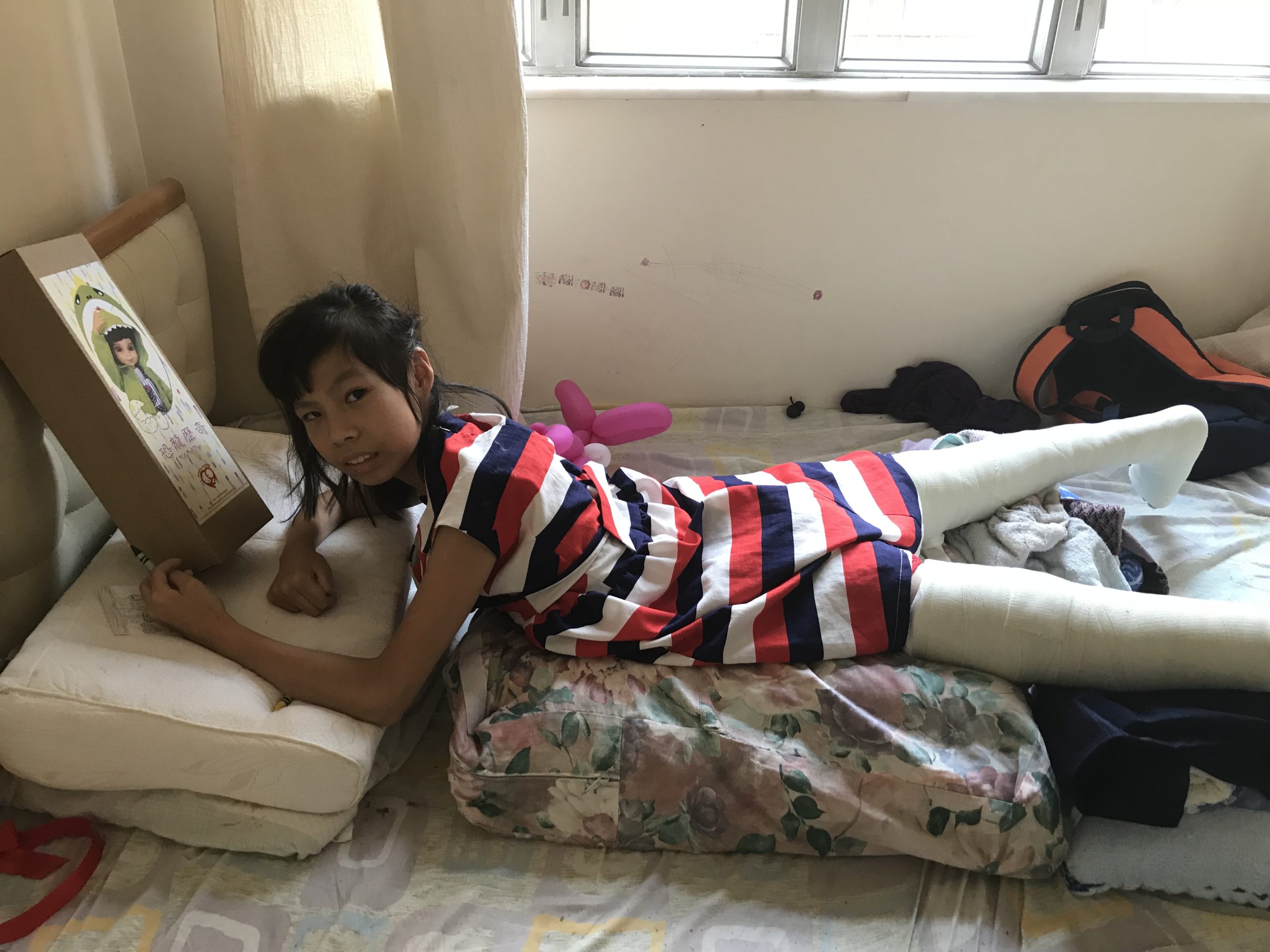Story 21 – Song Bei
 Song Bei lives in Zhejiang with her single mother and grandparents. Song Bei’s parents divorced when she was 8 months old and was taken care by her grandparents. She was diagnosed with Spastic Diplegia, a form of Cerebral Palsy. This disorder is caused by injury or pathological changes of the central nervous system (brain and spinal cord) before and after birth. It causes a permanent impact on muscle control on both sides of the body, typically affecting the legs more severely than the arms. Song Bei experienced deformity in her hips, knees and ankles. Her heels could not touch the ground, so she had to walk on her toes, which proved to be an incredibly strenuous task.
Song Bei lives in Zhejiang with her single mother and grandparents. Song Bei’s parents divorced when she was 8 months old and was taken care by her grandparents. She was diagnosed with Spastic Diplegia, a form of Cerebral Palsy. This disorder is caused by injury or pathological changes of the central nervous system (brain and spinal cord) before and after birth. It causes a permanent impact on muscle control on both sides of the body, typically affecting the legs more severely than the arms. Song Bei experienced deformity in her hips, knees and ankles. Her heels could not touch the ground, so she had to walk on her toes, which proved to be an incredibly strenuous task.
Song Bei received rehabilitation in a rehabilitation center in her village town, where she was able to walk using a tripod. Once she started primary school, she left the rehabilitation center. After several years without rehabilitation, the deformity of her hips, knees and ankles deteriorated, causing her to lose her ability to walk with a walker and her gait (manner of walking) getting more crouched gradually. She had to start using a Kaye walker to move.
The difficulty in movements has hampered her full participation in school life, such as games and other activities with her school friends. Song Bei’s grandmother, who is over 60 years old, had to escort her to and from school by carrying her on the back. Her grandmother also worked at Song Bei’s school by doing cleaning chores so that she could take care of her granddaughter. However, with advancing age, her grandmother found difficulty to carry her around. To correct her crouched walking manner, improve her ability to walk independently, and relieve the burden on her grandmother, Song Bei needed surgical treatment.
With support and sponsorship from SRDC, Song Bei – aged 12 at the time – and her grandparents arrived in Hong Kong, where she underwent an eight-hour-long orthopaedic surgery at the Duchess of Kent Children’s Hospital. The surgery consisted of bilateral hamstring release and right tibial internal rotation osteotomy (surgical cutting of bone). After she was discharged and returned home to Zhejiang, where she received post-operation rehabilitation. 6 months later, Song Bei could walk independently using a walker. Her hips, knees and feet are in a very good alignment, and her heels can reach the floor. She could walk in an improved gait with better endurance. As her lower limb deformities have been corrected, she now has a better sitting balance and can take care of herself, relieving the burden of her grandparents.


Last updated: Oct 2018
